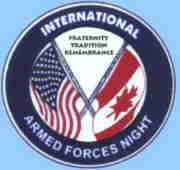The Tradition of Military Music
Military Bands and Music
The Music Continued...
By the Spanish-American War, the songs of Broadway and "Tin Pan Alley" became popular marching songs of the "webfoot" Infantry, such as "There'll be a hot time in the old town tonight!" By World War I, there was a ready sheet music and recorded music industry cranking out patriotic songs- though the Soldiers Over There continued to sing old favorites and raunchy versions of soldier-written songs, many adopted from their English-speaking allies. This tradition of adopting current popular music continued through World War II with one exception- the drill cadences or "Jody Calls" that were introduced to the Army through black troops near the end of the war (begun by the "Duckworth Chant" wax disc recording). With the motorization of the modern Army during World War II, marching songs became less popular than the familiar marching cadences learned in basic training.
After World War II, the U.S. Air Force became a separate branch of the service and created a number of new traditions, including an official song. All the other services and Army branches began to do the same. Today, these songs are played at graduations and other official functions by service bands using recordings. These songs trace their lineage back to those belted out by a series of talented (or loud) singers presenting the various verses, while the rest of the tired formation bellowed out the familiar chorus. It made the miles of mud and dust pass easier under their boots while they shifted their muskets from shoulder to shoulder.
In the Canadian Forces, the authorization of band marches and calls was formally regulated by Canadian Forces Administrative Order 32-3 “Regimental & Branch Marches of the Canadian Forces” This document listed in detail the musical pieces associated with various units in the Canadian order of Battle and even listed their order of precedence in being played.
The importance of traditional music to the Canadian Military is clearly demonstrated by the fact that Marches can not be adopted or changed without the prior approval of NDHQ/DMTH (Director Military Traditions and Heritage).
Recently, CFAO 32-3 was absorbed into Canadian Forces Publication A-AD-200-000/AG-000, "The Honours, Flags and Heritage Structure of the Canadian Forces.”




